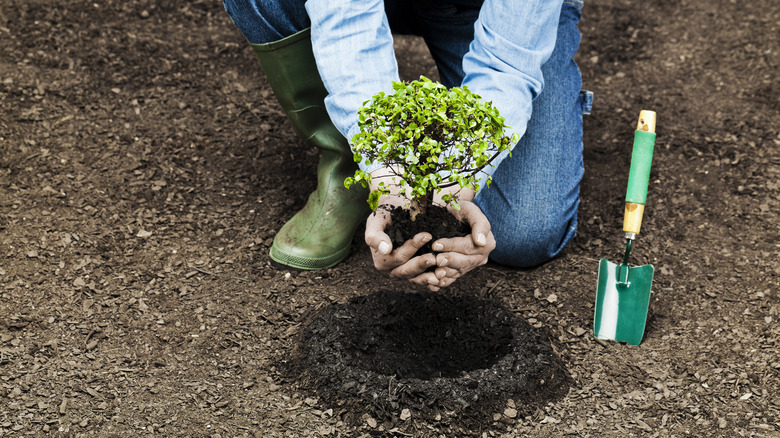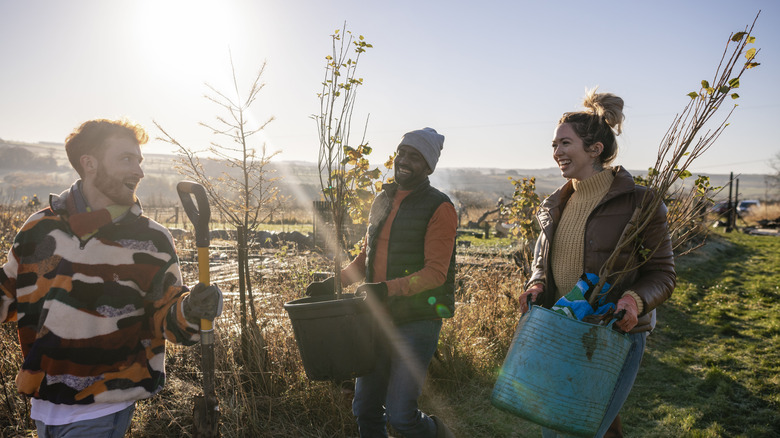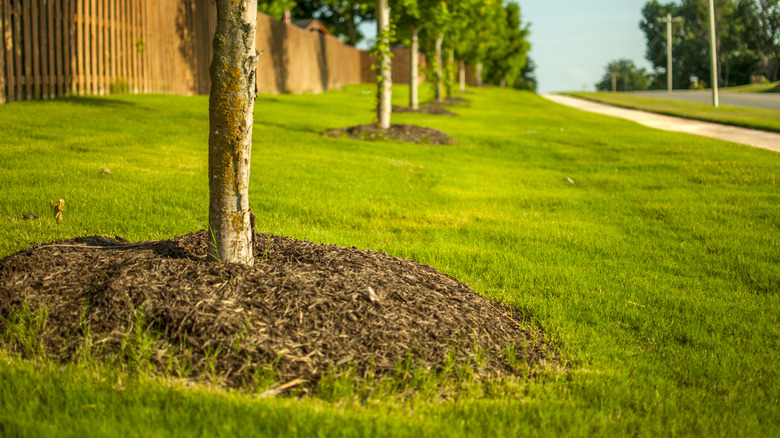Why Spring Might Not Be The Best Time To Plant Trees In Your Yard
When the last of the winter snow melts and nice weather is finally around the corner, many people head out into their yards to enjoy the sunshine and excitedly start planning for the coming growing season. However, while most plants are traditionally put into the ground in spring, as it turns out, for trees the best planting season is a little different. In fact, many trees and shrubs do better when they are planted in autumn instead of spring. The only trees that prefer spring planting are birch, fir, hemlock, larch, rhododendrons, and azaleas — other than that, the best planting season for trees is in the fall.
There are a few reasons for this. The first is that planting in the fall allows the new tree to start in warm soil and cool air which causes it to grow a better root system. This means that when spring and summer roll around, your saplings will already have a head start and will be better able to endure the high temperatures and drought-like conditions of summer. However, the advantages of fall planting don't just stop there.
Other reasons why fall is better than spring
Besides the fact that planting trees in the fall helps them become stronger before their first summer, another reason why planting trees in autumn is better than spring is that the young trees won't have to spend extra resources growing leaves. When planted in spring, saplings have to divide their energy between establishing a good root system and growing important foliage, which is necessary for photosynthesis and survival. This divided energy means that the root system of spring-planted trees will not be as strong as that of fall-planted trees which can focus all their energy on growing roots.
Fall is also often a better time for digging because the soil will still be soft and moist from summer but not too muddy and wet as it often is in spring. Furthermore, most people have more time in autumn when compared to spring because, by the time fall rolls around, all the yard work and gardening of spring and summer are already over. This means you will have plenty of time to give your newly planted tree all the attention it needs.
How to ensure your fall trees survive the winter
While fall-planted trees will be much better off once spring and summer come around, the biggest challenge is to make sure they are strong enough to survive their first winter. In general, it is important to get saplings into the ground well before the first freeze so they have plenty of time to grow strong roots before going dormant. Furthermore, the tree will need lots of water to help it develop an extensive root system. According to the University of Nebraska–Lincoln, a fall-planted tree should be watered up until the ground completely freezes to ensure that the roots continue growing for as long as possible.
While mulch is important for most young planted trees, it is especially important for fall-planted trees which will better endure the colder temperatures with a layer of mulch to keep the soil moist and the roots warm. The layer of mulch should be about three inches thick but should not be touching the trunk of the tree as this can cause moisture build-up and rot.


